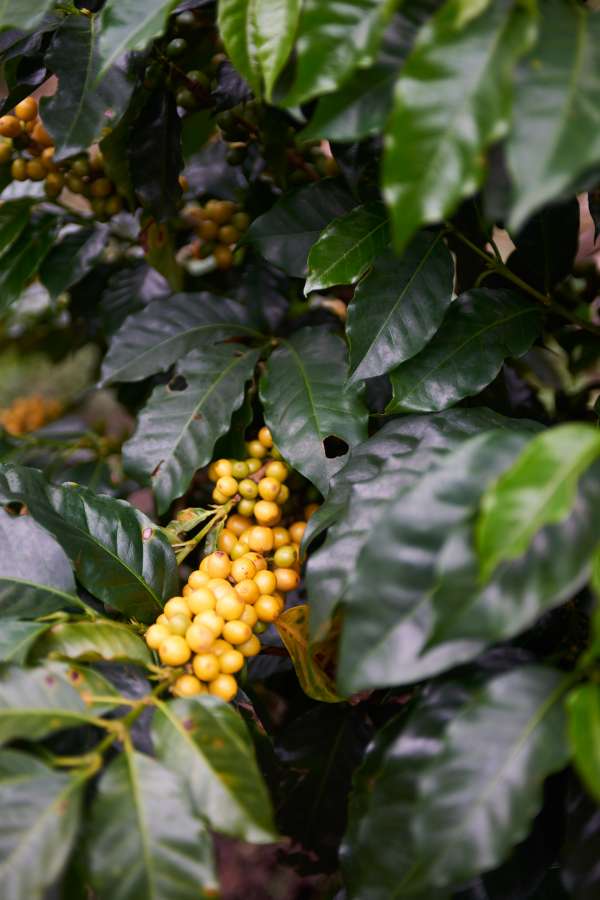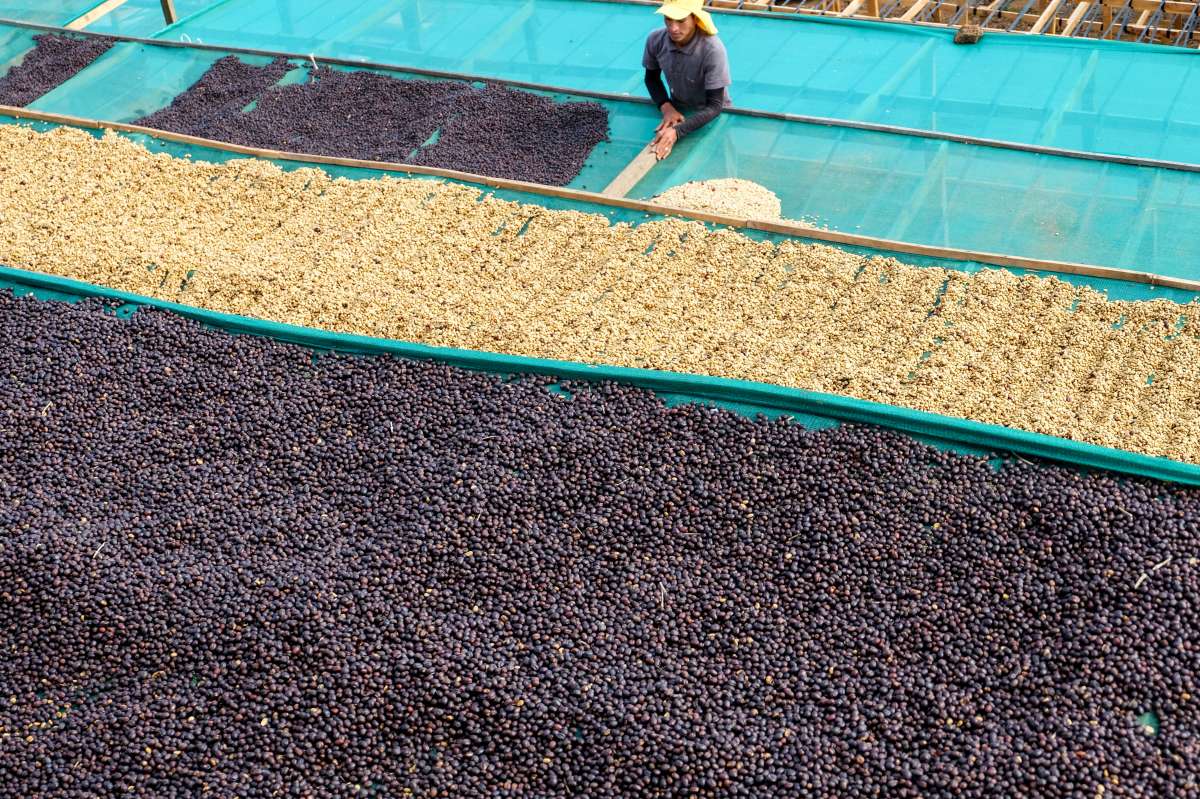
Written by Kevin Pasman • Posted on October 15 2021
Our new coffee from producer Karla Portillo is labelled as a 'yellow honey process' coffee. If you are wondering what that actually means, you are not alone. The yellow honey process is one of the types of honey processing that can be done to coffee which includes other colour names like white honey, red honey, brown honey and black honey. You may be happy (or maybe sad?) to learn that there is no actual honey involved in the process.
Let's take a step back, what is coffee processing?
Processing is the name we give to all the steps that get coffee from a small fruit on a farm to a small green seed ready to be roasted. Coffee beans are the pit of a small fruit about the size of a small cherry. Fittingly we call these coffee cherries. When the cherry ripens from green to a nice bright red, they are picked by hand and processing begins. The coffee needs to be dried out to lower the moisture low enough that bacteria will not grow in it while it makes the long journey to your cup. The coffee bean also needs to have the skin and flesh of the coffee cherry fruit removed from it; we just want the bean for roasting. After this there are a few more processing steps to go, but drying and removing the fruit flesh is our focus because it is the order in which these are done that determines what we call the processing. There are 3 general types of processing with many variations of each.

Natural Processing:


